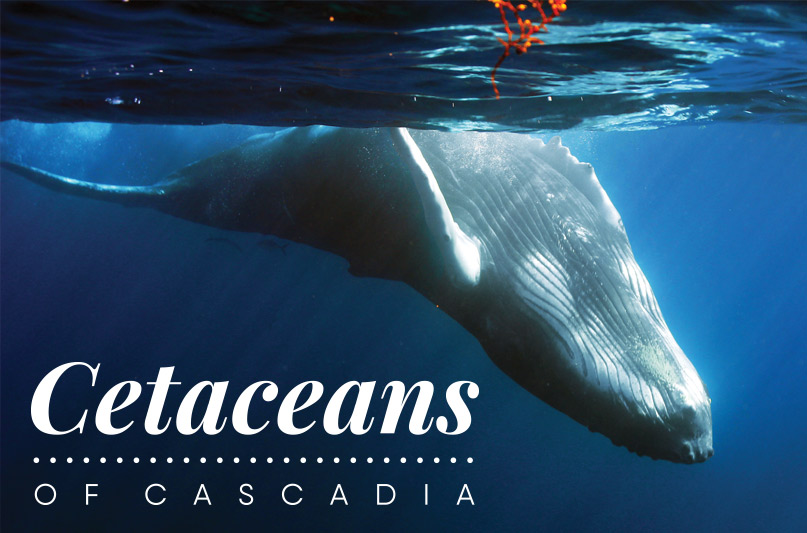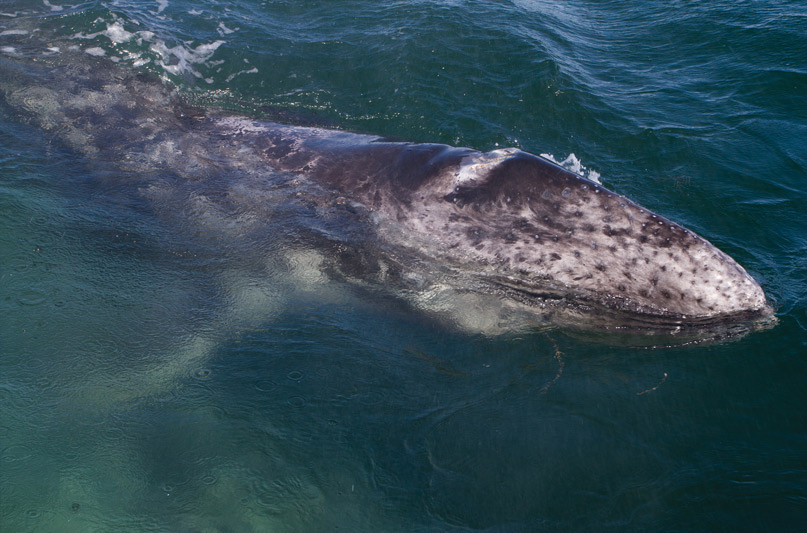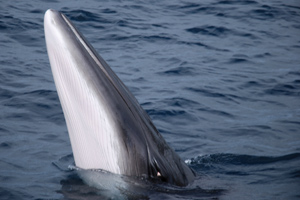
 A few years ago, my mom and I took a mother-daughter trip to San Juan Island, Washington. I wanted to fulfill a lifelong dream of mine, a dream since I began watching Free Willy on repeat: to kayak with killer whales. After our drive and a ferry ride to Friday Harbor on San Juan Island, we selected one of the many kayaking tours available and made reservations. The following morning, we hopped in a van, drove to the west side of the island, virtually leapt into our kayaks, and away we went on the open water, our intrepid guide in the lead.
A few years ago, my mom and I took a mother-daughter trip to San Juan Island, Washington. I wanted to fulfill a lifelong dream of mine, a dream since I began watching Free Willy on repeat: to kayak with killer whales. After our drive and a ferry ride to Friday Harbor on San Juan Island, we selected one of the many kayaking tours available and made reservations. The following morning, we hopped in a van, drove to the west side of the island, virtually leapt into our kayaks, and away we went on the open water, our intrepid guide in the lead.
This was almost eight years ago, but one thing that sticks out to me was how our guide, an older Pacific Northwest hippie type, was respectful of the orcas’ space—not only because he is required to by law, but because he genuinely did not want to harass the animals. To be honest, had he not been there, I might have been inclined to approach the animals myself.
I am being quite serious when I say I have always wanted to kayak with orcas, especially orcas. I have felt a special affinity towards orcas since I was a young girl, ever since my family made regular visits to see Keiko during his tenure at the Oregon Coast Aquarium. Being in the water with them did not intimidate me, and one of my ultimate dreams is to one day swim and photograph and film orcas underwater. Now a marine biologist, I’m partway there!

As I said, our guide was very respectful and knew the laws and regulations well, in particular the Marine Mammal Protection Act (MMPA) regulations put in to effect in 1972. This act prohibits the harassment of any marine mammal, with harassment meaning “pursuit, torment, or annoyance that has the potential to injure a marine mammal” or “potential to disturb…by causing disruption of behavioral patterns, including, but not limited to, migration, breathing, nursing, breeding, feeding, or sheltering…” Our guide knew that deliberately putting yourself in the way of the animals is, technically, harassment.
The behavior we saw from other boaters was different than our own. When the pod of whales showed up, we saw at least four other boats, and some other kayakers, deliberately going towards the path of the whales. Our guide insisted we maintain a respectful distance, and if the whales looked as though they were coming our way, we would simply stop paddling and see what happened. It can be frustrating for someone who is keen to have these up-close wildlife encounters to sit back and wait. These rules are in place to ensure the safety and longevity of the animals, especially for those with smaller populations, such as the endangered Southern Resident Killer Whales.
Our guide was fantastic at balancing between the requirements of a naturalist —providing a unique and unforgettable experience for the customers, but not at the expense of the resource or fauna that they are encountering. It is one of my favorite wildlife experiences to this day, and I know for certain that I want to do it again.
My husband and I had a slightly different, but equally memorable, whale-watching experience in the San Juans with Western Prince Whale & Wildlife Tours. I had met the owner and operator, Ivan Reiff, while working as a wild dolphin swim guide in New Zealand, and he invited us to check it out next time we were in Washington. Again, we made our way to Friday Harbor, and the following morning made our way down to the Western Prince office.
As we suited up in our Mustang suits (designed to go over your clothes to keep you warm) and climbed in their Zodiac, I had the sense of being a wildlife documentarian, like David Attenborough. We saw a variety of wildlife, including Dall’s porpoises, bald eagles, harbor seals, and the star attraction—orcas.
I often seek out whale-watching as an activity whenever I arrive in a new coastal town, especially if there is a new species to see. There is something equally thrilling and meditative about being in proximity with an animal of that size, power, and intelligence. Many different species of whales, porpoises, and dolphins (collectively known as cetaceans) can be seen in Puget Sound, including long-beaked common dolphins, Dall’s porpoises, and of course, the famous Southern Resident Killer Whales. Puget Sound has many opportunities to see whales year-round, but summer is a particularly good time, not only because new species are in the area, but because the weather and sea surface conditions can’t be beat. To get the best out of your experience, there are a few things to keep in mind:
Seasons: Some species of whales adhere to a seasonal migration pattern, meaning that the chances of seeing certain species will increase or decrease based on the time of year. The two main seasonal visitors are gray and humpback whales. Gray whales travel from the North Pacific, where they spend the summer months feeding, down to Baja California in the winter where they breed and give birth to their young. A group of gray whales, known as the Sounders or Saratoga Grays, break off from the migration from Baja to Alaska and spend two to three months in north Puget Sound feeding on ghost shrimp and other favorite invertebrates. Some continue to Alaska eventually, but some stay in the Sound the entire summer. Humpback whales have a similar migration, spending their summers in Alaska, but then go to Hawaii to breed during the winter. As Pacific Northwest locals already know, the Southern Resident Killer Whales are just that—residents, meaning that they spend a majority of their time in Puget Sound, though they do travel up and down the West Coast. A couple other species of baleen whales, the minke whale (pronounced meenk-ee) and the fin whale, can also be seen in Puget Sound. They are slightly more uncommon to see, so when you do see them, it’s a rare treat!
Behavior: The type of behavior you can expect from cetaceans depends on the species. For killer whales, you can expect a wide variety of behaviors, travelling (moving from point A to point B at decent speeds), feeding, spyhopping (pointing their head out of the water, which scientists suspect is to gain a better view of the surrounding area), breaching (jumping clear of the water), porpoising (jumping low out of the water while travelling), blowing (breathing), and tail-slapping (exactly what it sounds like, and suspected to be a form of communication). Gray whales have also been known to spyhop as well. Dall’s porpoises, if they are in the area, love to ride the bow waves of boats, and you can look for the distinct rooster tail of water coming off their dorsal fin as they do so. Common dolphins are not quite as typical, but when they are in the area, they can be seen porpoising in large pods. Harbor porpoises are known to be shy, and are not seen nearly as often.
In many respects, Cedeno has her dream job on the water. Ever since that day spent tacking back and forth from the SYC’s dock, Cedeno felt most alive on a boat.
When you see a whale or dolphin out on the water, it can be very difficult to refrain from approaching the animals to get a better look. Perhaps you don’t even see how it could be a negative thing for the animals. Approaching a wild animal normally always changes its behavior because your presence normally puts them on edge. Instead of eating or relaxing, they are now on high alert or trying to move away from you. This results in the animal spending more energy than they would have otherwise. Also, especially with the case of boats, approaching an animal increases the risk of causing injury to the animal, potentially by boat strike. Noise from vessels can also be detrimental, as whales and dolphins are as reliant on their hearing as we are on our sight. Noise may interfere with their ability to communicate and find food.
The Washington State Legislature passed an act in 2008 to mitigate impacts on Southern Resident Killer Whales, since they are typically the main focus of whale watchers during the summer. Under these regulations, it is unlawful to approach closer than 200 yards of a southern resident orca, to position a vessel within the path of an oncoming orca, to fail to disengage transmission of a vessel within 200 yards of an orca, or to feed an orca.
These laws are more restrictive than the federal laws listed in the Marine Mammal Protection Act, which sets the boundary area at 100 yards for all species, and outlines that any vessel activity that would change the whale’s behavior or is dangerous to the whale (using excessive speeds, changing direction very quickly, trying to herd or separate animals) is strictly forbidden. NOAA also published guidelines in 2016 that are similar to the Washington state laws, with a boundary of 200 yards.

Washington Fish and Wildlife “Voluntary No-Go Zone”: The population of Southern Resident Killer Whales has been in decline over the past 20 years, surmised to be from decreased Chinook salmon runs, toxic pollutants, and/or vessel noise and traffic. To alleviate pressure on the whales, the Washington Department of Fish and Wildlife is asking vessel operators to avoid the western side of San Juan Island, between Mitchell Bay to Cattle Point. The zone extends about a 1/4-mile offshore and a 1/2-mile off Lime Kiln Lighthouse Whale Watch Park. The idea is to give the whales a quiet and undisturbed area to feed and behave normally, without having to expend excess energy dodging and avoiding boats. Discouraging anglers from fishing in this area may also make more food available to the whales.
There are questions as to whether the voluntary no-go zone will have the desired effects. Several orca researchers and conservations, including Ken Balcomb, a member of Washington Governor Jay Inslee’s Killer Whale Task Force (more on that below), have been quoted saying that the voluntary no-go zone is more of a “feel-good measure” and will not provide any relief to the whales. Balcomb states that the larger issue for the whales is their decline in food that may be related to overall fishing pressure in the Sound and dams that destroy salmon spawning habitat upriver, and not as much related to vessel noise and traffic. The whales have been spending less time in the designated zone regardless, and so a voluntary closure will most likely not yield results. If you are planning on boating this summer, please research the voluntary no-go zone and determine whether you will consider this as part of your boating and fishing plans.
New Orca Protection Task Force: In addition to decreased fishing seasons to help take pressure off the whales’ main food source and the voluntary no-go zone, Governor Inslee has assembled a task force to determine data-driven decisions for Southern Resident Killer Whale population recovery. This task force assembles representatives from nonprofits, the private sector, tribal officials, state officials, federal officials, and Canadian officials, to come together and determine what could be affecting the southern killer whale population. They will be assembling a report and recommendations on dealing with issues such as toxicology, vessel behavior, and food availability; this report will be completed by October of this year. Stay tuned!
One doesn’t think of whales going up rivers all that often, but recently, eight to twelve orcas were spotted east of the Astoria-Megler bridge on the Columbia River. One may think they are following salmon up the Columbia, but these orcas were identified as transient orcas, which mainly feed on marine mammals such as sea lions. This is the first time they have been recorded in the Columbia River. One was even individually identified as T125A.
The orcas were most likely taking advantage of the abundant sea lion population around Astoria, often found resting in huge groups on the local city docks. One whale was even observed to be feeding on a sea lion. It appears that the whales took a gamble exploring up the Columbia River, and the gamble paid off. Who knows – maybe we will see them there again!
The sea lion population in Astoria is a subject of debate, as it is in many coastal towns with harbors. Sea lions like to use manmade docks as their haulouts and can be noisy and a bit of a nuisance to people using the harbors. The increase in the upriver sea lion population is potentially a strain on fish populations like salmon (especially around fish ladders).
Many different strategies have been used in Astoria to scare sea lions away from the docks, including balloons, streamers, and infamously a large fiberglass orca that played whale sounds. It was a bit of a flop (literally – it rolled over once it was put in the water), and didn’t seem to scare the sea lions too much. These real orcas are probably much more effective than the fiberglass version. The trip from the orcas may have done its job in freeing up some dock space as the sea lions scattered for better hiding spots! Perhaps sea lions camping out near the fish ladders upriver won’t be the top of the food chain for much longer.
Read the full story on Issuu
